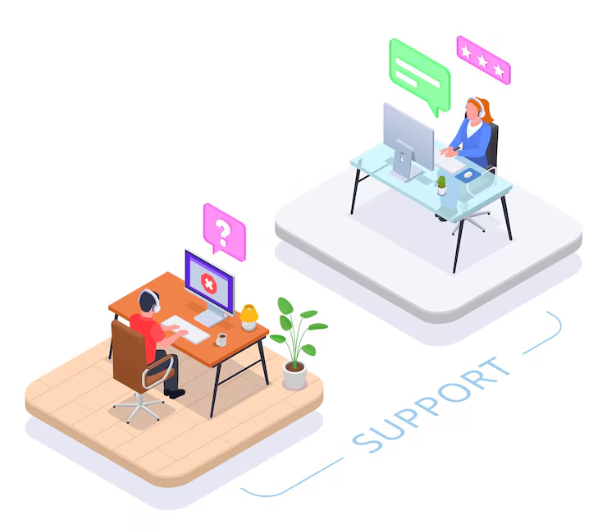Infosearch provides the best chat and email support services for all businesses. We provide 24×7 chat email services to enhance your customer support services. Contact Infosearch to outsource your chat email support services.
The advancement of chat email services has triggered the development of new technologies and a change in expectations among end users. Here’s a comprehensive look at how these services have evolved from traditional to modern solutions:
1. Traditional Email Services
Foundational Era (1960s–1980s):
Origins: Email is considered to have been born in the 1960s with systems such as the Compatible Time-Sharing System (CTSS) at MIT, which enabled users to leave messages for other people.
Development: In the 1970s, improved parameters of the email have been established, including the Simple Mail Transfer Protocol (SMTP), to popularize the expansion of the communication channel.
Mainstream Adoption: Finally, it arrived in the 1980s with services such as Compuserve and MCI Mail, along with software standards such as Internet Protocol Suite (TCP/IP).
Desktop Clients (1990s–2000s):
Software Clients: These email client applications popularly used include; Microsoft Outlook, Eudora, and Lotus Notes, which feature rich text formats, attachments, and organism tools.
POP3/IMAP: Three original protocols were in the past mainly used for retrieving messages, namely: POP3, IMAP, and Novell GroupWise, which brought enhanced flexibility.
2. Web-Based Email Services
Rise of Webmail (late 1990s–2000s):
Pioneers: Features like Hotmail, yahoo mail and later Gmail changed the face of the mail from the client’s hosting base service.
Features: Webmail services brought in huge amounts of storage, searching, filtering against spam, and web service integration.
3. Integration with Chat Services
Early Integrations (2000s):
Initial Steps: Many of the instant messaging services, such as AIM, ICQ and MSN Messenger, started providing simple mail notifications, or SMS.
Unified Communications: Businesses began seeking a single communication interface consisting of e-mailing, chatting, and other applications.
4. Modern Chat Email Solutions
Collaboration Suites (2010-Present):
Google Workspace: A set of applications that used to be called G Suite; it is a complete system with mail, chat, meetings, documents, and many more elements focused on integration.
Outlook in MS 365 is integrated with Teams, OneDrive, and SharePoint, aimed at boosting collaboration.
Slack: Originally primarily based on chat, Slack complements and connects with e-mail and other utilities to improve communication and productivity.
AI and automation:
Smart Features: Thus, modern email services have three AI- functionalities, as follows: Firstly, to group emails; secondly, to propose typical answers; and, thirdly, to perform corresponding routine work.
Voice Assistants: Incorporation with Google Assistant and Cortana for dealing with emails, including consulting schedules for meetings.
Security Enhancements:
Encryption: This means that total security of the content of the communication is provided and maintained from the sending end to the receiving end.
Two-Factor Authentication (2FA): Ensured accounts were secure from unauthorized access by incorporating several protection measures.
Mobility and Ubiquity:
Mobile Apps: Mobile clients for principal e-mail services are powerful when delivered as applications on a mobile platform.
Cross-Platform Syncing: It makes sure that the user gets to interact with his or her emails or chats and has the same experience on different devices.
5. Future Trends
Continued AI Integration: More progress will be made in the future in the area of AI to make better intelligent usage of emails and other predictive aspects.
Enhanced Collaboration Tools: The continuation of incorporating refinements to real-time cooperative work and/or project management within email applications.
Augmented Reality (AR): Possible AR application for virtual meetings and interaction like email and chat.
Decentralized Email Systems: An Examination of a Specific Cryptocurrency Application—Decentralized, Secure Email Use of Blockchain.
The characteristics of chat email services imply the general tendencies of the development of technologies and communications, which are in active process of expansion and modification to meet the expectations of consumers nowadays. These very services are going to become increasingly integrated, intelligent and secure, which is going to determine the future of communications and collaboration.
Contact Infosearch for your chat email customer support services.








Recent Comments